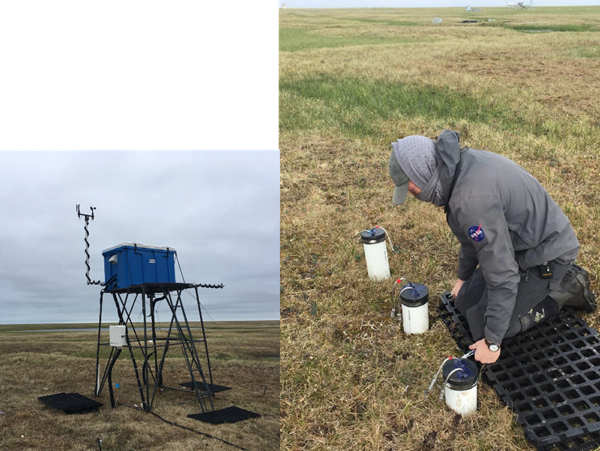
INTAROS Researchers Donatella Zona (University of Sheffield) and Walter Oechel (University of Exeter) were in Alaska this summer to try to figure out the interplay between methane produced by terrestrial Arctic ecosystems and global greenhouse gases.

Greenhouse gases have received a lot of press coverage in recent years in the face of continued climate change and its apparent impacts. Terrestrial systems in the Arctic produce significant amounts of methane gas that contribute to atmospheric levels of carbon; however, the emission of this gas is also influenced by changing climatic conditions such as decreasing snowfall, rising air temperatures, etc.

Our team installed thermocouples to measure high-resolution soil temperature profiles. Data was collected at several sites in northern Alaska, including Utqiaġvik, Atqasuk, and Ivotuk, continuously measuring water table levels and thaw depth. These measurements will be used to explain the temporal variability in greenhouse gas emissions in the area.
As part of INTAROS's commitment to developing and strengthening the skills of early-career researchers (capacity building), graduate students also participated in the field work.
Donatella Zona presented this work, together with the general scope of INTAROS at the BARC Science Fair in northern Alaska. You can read all about it here.

29 July 2018